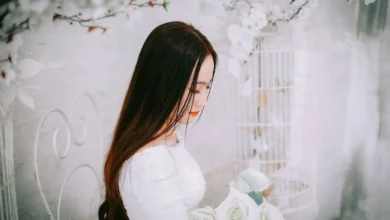How To Embrace Nature Indoors: The Allure of Cottagecore Interior Design

Step into a world wherein rustic attraction meets contemporary comfort with Cottagecore Interior Design. Explore the timeless enchantment of cozy aesthetics, herbal factors, and a touch of nostalgia. Uncover the secrets to creating a home that captures the essence of the geographical region even as embracing the warm temperature of cottage-stimulated interiors. Dive into the enchanting global of Cottagecore interior design with our expert insights and pointers.
What is cottagecore interior design?
A portion of the origins of cottagecore interior design may be found in the way the European aristocracy used decorative farms as a way to avoid reality.
But nowadays, a specific online culture has greatly influenced the cottagecore style. Natural materials, indoor plants, and buckets of flowery designs are all to be expected as they combine to create a dreamlike, pre-industrial setting.
That being said, historical authenticity isn’t always crucial to the cottagecore movement. Generally speaking, cottage core represents the desire to achieve fulfilment in self-sustenance and life simplicity. Cozy areas, rustic accents, and romantic, nature-inspired themes complement this.
Cottagecore is a lifestyle centred around self-reliance, which includes things like manufacturing your own goods wherever feasible rather than purchasing mass-produced ones. But for the sake of this piece, cottagecore interior design will be our main emphasis.
Interior Design Features of Cottagecore
A cottagecore building should be comfortable, functional, and light-filled. Your cottagecore décor will still have elements like wicker baskets on your front porch or dried herbs on display in the kitchen, even if “self reliance” is not something you have time for.
Although cottagecore promotes a simpler lifestyle, it should not be mistaken with minimalism, which emphasizes straight lines and negative space. As an alternative, cottagecore celebrates a certain type of honey clutter, including jars left out on counters, baskets full of yarn balls placed next to rustic wooden furniture, and piles of books left on bedside tables.
Natural Materials
Is it any surprise that cottagecore interior design incorporates biophilia? It brings a hint of freshness, while the overall cottage core aesthetic’s warmth counterbalances it.
You may add aloe vera, banana palm, Boston fern, devil’s ivy, and English ivy to your home design.
You might also want to think about a few things, like:
- Wicked
- Cannabis
- Rosewood bar stools
- wool shawls
- clean sheets
- woven pieces
- gingham patterns
- Bamboo-
- uncovered brick
- Stone (Get ideas from the newest stone trends)
- Ranttan
- shellfish
- Recycled resources
Vintage or antique furnishings
One of the most important components of cottagecore interior design is this. Choose a rustic farmhouse style or one with a French flavour for the greatest effects.
Vintage accent pieces and furnishings will contribute to the nostalgic vibe that defines cottagecore. Consider reclaimed furniture, antique or vintage-inspired furniture, dressers with hutches, and old china. These furniture styles include Queen Anne, Chippendale, and William and Mary.
Millwork shop drawings may help you get the exact look you want for wooden products. Don’t worry about worn-out textiles, chipped paint, or damaged wood. Each of them enhances the appeal.
A Specific Colour Scheme
Pastel and neutral colours make up the majority of the cottagecore interior design colour scheme. Bold colours can be used; it’s only the norm rather than the rule.
Think of shades of beige, cream, pastel blue, stone, soft pink, sage, mint, and eggshell white. You may use them in your furniture and décor instead of just hanging them on the walls.
Kitchen Equipment and Utilities
You may utilize the following components in your kitchen:
- Sinking Butler
- Maid Sheila
- Customized enamelled range oven
- Farmhouse kitchen Table
A Residency Area
Although having an abundance of junk bothers no one, cottagecore interior design embraces a lived-in aesthetic. A large portion of this is just the result of arranging some items, such as jars, hardcover books, and quality kitchenware, as decorations.
However, if there isn’t a method to the chaos, you’ll only end up with a disorganized space that doesn’t seem comfortable
Do It Yourself
Nothing quite captures the essence of cottagecore like do-it-yourself projects. You may think about:
- cultivating a garden (little or huge)
- Establishing a compost pile
- Stitch-and-hang wall hangings
- Flowers in a press
Our ideas in outdoor living architecture may also serve as inspiration if you have the available area.
Shabby Chic, Farmhouse Style, and Cottagecore
All three of these styles share significant similarities, so it’s simple to mistake one for the other. There are specific components that are more prevalent in particular styles, even though there are no hard and fast rules.
Particularly in terms of subtle distinctions, cottage core and shabby chic are quite similar.
Farmhouse design:
- uses aspects that are both current and old.
- To emphasize white and other neutral colours over pastels.
- Emphasizes wooden components more than cottagecore, which emphasizes textiles more.
- It’s more of a mix-and-match style than cottagecore, which favours matching pieces.
Shabby chic:
- possesses a more “torn and worn” appearance than cottagecore.
- makes use of traditional hues like green whites, duck egg blues, and soft greens.
- use some less “feminine” materials and items as well, such the material of burlap sailcloth, and denim.
- defined less by the countryside and independent life and more by warmth.
In summary
We hope that this post has helped you understand how to use features of cottagecore interior design in your home design.
You’ll need photorealistic 3D rendering services for any architectural, interior design, or construction project, regardless of the style you want to realize.
For big to medium-sized hospitality, residential, and commercial projects, BluEntCAD provides services to homebuilders, real estate developers, interior designers, architects, home renovators, design-build contractors, and remodelers.



